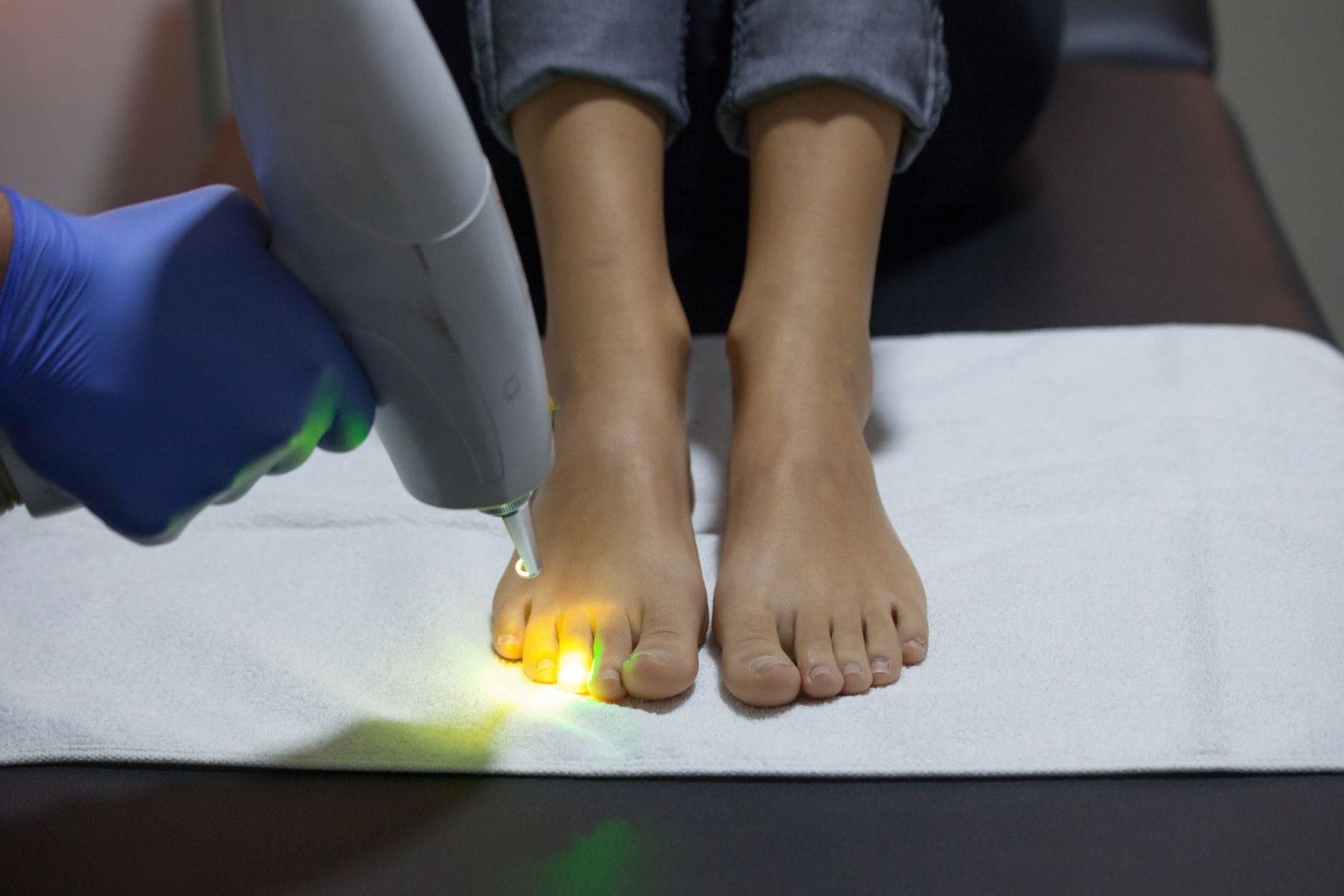Fungal nail infection is an extremely common condition. In fact, it affects between 3 and 12% of the population with prevalence among older people. Though nail fungus can be found on the fingernails, it is much more likely to affect toenails. This type of infection causes nails to become brittle, rough in texture, opaque, and discolored.
Fungal infections, onychomycosis, are notoriously difficult to treat and cure. Traditional treatment methods can take a long time, even several months, to work. There is good news! Newly developed laser devices are being used to target nail fungus and treat it effectively in a fraction of the time.
Table of Contents
Advantages of Laser Treatment for Nail Fungus
The FDA has approved the use of laser equipment to treat fungal nail infections. For people with onychomycosis, this treatment has been shown to be effective at clearing the nail of fungal growth, while offering a number of benefits. In comparison to traditional treatment options, laser treatment is drug-free, painless and non-invasive.
It is a safe procedure and requires no anesthesia. Clients can be treated in a few short sessions and return immediately to their regular daily activities after each appointment. There is no recovery period, they will walk out of sessions feeling fine and most clients only feel a slight warming sensation while the procedure is performed. Once the living fungus is killed by laser therapy, healthy nails will begin to grow again from the cuticle.
Unlike prescription oral medication, clients don’t need to undergo blood tests before beginning treatment or worry about harmful side effects on their liver. Plus, laser therapy acts faster and is more accurate than topical medications.
How Anti-Fungal Laser Treatment Works
During a 15 to 30-minute session, a laser operator targets the fungus which lies on the soft tissue of the nail bed. The equipment emits pulses of energy which create a thermal effect on the nails and skin. The laser is able to penetrate the nail and kill the fungal activity, yet the wavelength setting minimizes any discomfort the client may feel.
Best Practices for Laser Operators
For dermatological offices and medspas, laser treatment for toenail fungus represents a new, highly demanded service to offer clientele. When treating clients, there are a few recommendations for delivering the best results.
- Evaluate the nails before beginning treatment to confirm the presence of onychomycosis.
- File down the nail and debride the area prior to applying the laser.
- Be sure than any nail polish, gel, and other coatings are completely removed before-hand.
- Move the laser over the affected nails and those which may not appear to be effective. This helps ensure that persistent fungal growth, even which is not yet visible, is stopped.
- Schedule a follow-up session within 1-3 months. We advise completing 3-4 treatment sessions spaced 5-6 weeks apart for full effectiveness.
- Continue to monitor the condition of the nails and re-treat as necessary.
- As the nails grow out, you will be able to recognize the healthy, clear nail growth and/or treat any areas affected by infection future sessions.
- Clients can reapply nail polish as desired following treatment.
Effectiveness of Laser Treatment for Nail Fungus
Clients will likely see improvement after the first round of laser treatment; most will require multiple treatments over a period of time. Effectively eradicating the fungus may require regular appointments over 6-12 months.
This treatment is very effective. In fact, 80% of cases are noticeably better after just a single therapy session and most see improvement within 3 months. Continual improvement will be seen as the nail grows out and healthy nails replace the areas affected by the fungus. Treatment is considered complete when the nail growth is clear, the surrounding skin is free of fungus, and the symptoms of the infection have been resolved.
Watch this short video to learn more about how laser treatment works to eradicate toenail fungus.
Laser Equipment Available for the Treatment of Nail Fungus
Early in the development of laser technology for fungal infection applications, CO2 lasers were tested. Results were marginal and required multiple treatments over a three-year period. Since then, clinicians have found much better success rates and more immediate results with less invasive laser equipment. Currently, the FDA has approved the following types of laser devices for the treatment of nail fungus.
- 1320 nm Nd:YAG
- 1064 nm Nd:YAG
- long-pulsed 1,064-nm
- Nd:YAG Q-switched
- 532 nm output mode Nd:YAG
- 1064 nm Diode
- 980 nm Diode
- 870/930 nm Diode
Get more insider advice: Combination Therapies May Be Best for Tattoo Removal.
Grow Your Business with Laser Technology
As the demand for successful toenail fungus treatment increases, smart dermatology, and medspa practices are working to welcome these clients and offer them an effective solution. Contact Laser Service Solutions to ask about our range of pre-owned laser equipment for sale, as well as convenient rental, leasing, and financing options.


